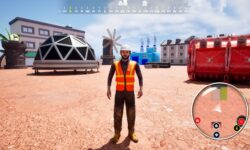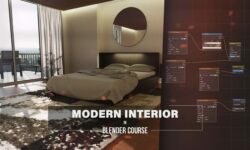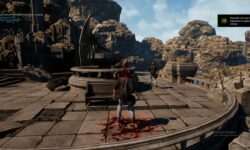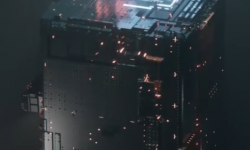Cinema 4D Complete – Vol. 3 Unleash the power of Mograph!
Release date:2021, April 8
Author:Lionel VICIDOMINI
Skill level:Beginner
Language:English
Exercise files:Yes
The third volume of the complete training unleashes the power of Mograph!
But what is Mograph exactly ? This is the toolset that made Motion Design so popular. In the 2000es Maxon introduced Mograph, which was then just a module, and has become over time a key element of Cinema 4D.
Mograph allows you to create eye-opening, mesmerizing, gorgeous looking animation very easily. Its modular approach makes it very simple to just add element of design on top of each other and achieve beautiful result very quickly.
I’m Lionel VICIDOMINI, a Maxon Certified Instructor, Maxon Master Trainer and Motion Designer based in Paris, France. I believe that in order to truly master a software you have to learn it by the details. I have created this series of training, to create a video manual of Cinema 4D and to be the most thorough possible while being entertaining.
In this training we will explore everything that Mograph can do, and that is a lot !
How Mograph works fundamentally, the core concepts behind it
A complete library of all the effectors and how to use them
An in-depth exploration of the fields, and how to combine them with the effectors
All the Mograph Generators, such as the Voronoi Fracture which can shatter any object into tiny pieces
How to combine Volumes and Fields to produce stunning imagery
Master the Vertex Map fields, which can create incredible growth systems, generating organic, living shapes
The last chapter offers several in-depth workshops, with almost 4 hours of in-hands practical exercises. In these workshops you will create :
A fully procedural, auto-animated clock! Look, mom, no keyframe!
Model a Barrel Generator: Donkey Kong will be jealous. With control over the number of planks, their thickness, the curvature of the bulge etc…
Make dominos tumble, any way you want !
Create a wall of cube, creating a transition between two textures. Ideal for corporate Motion Graphics
Design an intricate transition made of intersected hexagons. Convert it to an animated, seamless, never-ending background
Pile up legos to create a stunning logo! Animate the build-up!
The Fractured Sphere will create a mesmerizing look, of slow motion debris flying to nothingness
Make dripping droplets of condensation accumulate on a can of beer !
I have designed this training as a video manual, with short sections, packed with information. It is not mandatory to watch all the videos ! You can watch them as you wish, along your journey into Mograph, as needed. You can very well jump straight ahead to the final chapter, the workshops, and go back to studying videos about specific tools used in the exercises.
This training is perfect for beginners, who will need to learn all the fundamentals of Mograph, as well as for more advanced users who will be delighted by the depths of details for every video and with the intricate workshops at the end of the training.
This training has been recorded on R23 but can be followed very easily in newer and older version, going back to R20. It is not recommended for older releases (R19 and below) because of the fields which were introduced in R20 only.
It is not required to have followed the first two volumes of the series, but it can greatly help, especially if you are new to 3D.





 Channel
Channel






is impossible to pay